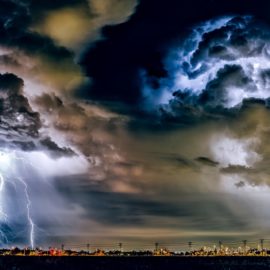
Yesterday there were two articles providing ways to comment about the Mid-Barataria Diversion. The first was short and sweet on how to comment and it said:
At $2 billion, the Mid-Barataria sediment diversion project is a key piece of Louisiana’s 50-year, $50 billion to protect and restore its retreating coastline. The Army Corps of Engineers has released its draft environmental impact statement on the project, and the Louisiana Trustee Implementation Group of the BP Deepwater Horizon Natural Resource Damage Assessment Team has issued its restoration plan. Public comments are being accepted jointly on both. You may access the 5,800-page report and appendices via this link and the restoration plan at this link. You may comment on them in one of three ways: Online at this link, By calling (866) 211-9205 or by mailing to U.S. Army Corps of Engineers, New Orleans District; Attn: CEMVN-ODR-E, MVN-2012-2806-EOO; 7400 Leake Ave.; New Orleans 70118. The comment period closes May 4 at midnight. After that, the Louisiana Trustee Implementation Group will write a final restoration plan to support the state’s request for a construction permit, and the Corps will write a final environmental impact statement and consider issuing permits to build the diversion.
nola.com
The second fleshed out both the comment period and provided more depth on that will occur once the project is begun.
The Army Corps of Engineers, the National Marine Fisheries Service and the Louisiana Coastal Protection and Restoration Authority on Wednesday urged coastal residents affected by the proposed $2 billion Mid-Barataria sediment diversion project to participate in a 90-day public comment period that will include three days of public hearings in April. “Any comment we receive will be addressed in the [final version of] the environmental impact statement,” said Jeff Varisco, a Corps senior project manager overseeing the report. “The phrase we’ve been using in the coastal program during the last few weeks is ‘productive participation,'” said authority chairman Chip Kline. “If you have concerns about the diversion, participate in the process, force the Corps to respond to your concerns.”
Nola.com
This Environmental Impact Statement (EIS) was drafted by the Deepwater Horizon Natural Resource Damage Assessment program’s Louisiana Trustee Implementation Group. This is additional repair and mitigation of the Deepwater oil spill and is being funded by the monies received. If approved, permits for the work will be received as laid out in the National Environmental Policy Act, Clean Water Act and the Rivers and Harbor Act. The final EIS will be released in early 2022.

Coastal authority officials showed these two maps during Wednesday’s meeting to show the difference between land area without the Mid-Barataria diversion, left, and land with, to right. The yellow area is land built by dredging sediment from the river and pumping it inland. These images assume sea level rise of a half-meter over 50 years, which is lower than the worst-case scenario used in the environmental statement. Coastal Protection and Restoration Authority
Based on a high estimate of future sea level rise, the diversion is expected to create or protect 17,300 acres of wetlands at the end of its first 30 years, with continued sea level rise expected to reduce that amount to 13,400 acres at 50 years. The dramatic increase in freshwater caused by the river redirection into the basin will have major effects on existing commercial fisheries, including oysters, and brown shrimp, said Bren Hasse, executive director of the coastal authority. Recent scientific reports by fisheries service scientists also warn the freshwater is likely to kill an estimated 34 percent of the more than 2,000 bottlenose dolphins that live in Barataria Bay. Haase said those studies also conclude that after the first 10 years, the number of dolphin deaths would likely decrease, and that in the last 10 years of the 50-year project, fewer dolphins would die with the project operating than if it were not built. Haase said studies of the effects of freshwater on a similar group of bottlenose dolphins in Galveston Bay after Hurricane Harvey in 2017 indicated that many of those dolphins avoided the lowest salinity areas there. That could indicate the Barataria dolphins might “learn” to avoid exposure to freshwater when the diversion is turned on.
However, despite what the Corps of Engineers and the state is saying, not all agree.
Capt. George Ricks, president of the Save Louisiana Coalition of fishers opposed to the diversion, said the environmental impact statement’s conclusions and the dolphin studies confirm his group’s view that the diversion will devastate a major state industry on which a large part of south Louisiana’s residents depend. He said the $33 million the state plans to set aside for mitigation of fishers is not enough, when compared to the economic size of the commercial fisheries. “In 2018, brown shrimp landings in Louisiana totaled $36.4 million, and 32 percent was from Barataria Bay,” Ricks said.

Coastal Protection and Restoration Authority
Bill Bubrig, a Plaquemines Parish insurance agent who sits on the coastal authority board, warned that the property owners might be confused by the different options listed in the report, since each property might be offered a different option. Haase said authority officials already have explained their mitigation thinking to the homeowners, but he also recommended that they express their preferences and their concerns in public comments on the impact statement.
With all the impacts, both good and bad, of the diversion comments do need to be submitted. If you are impacted, then, comment as described above.



